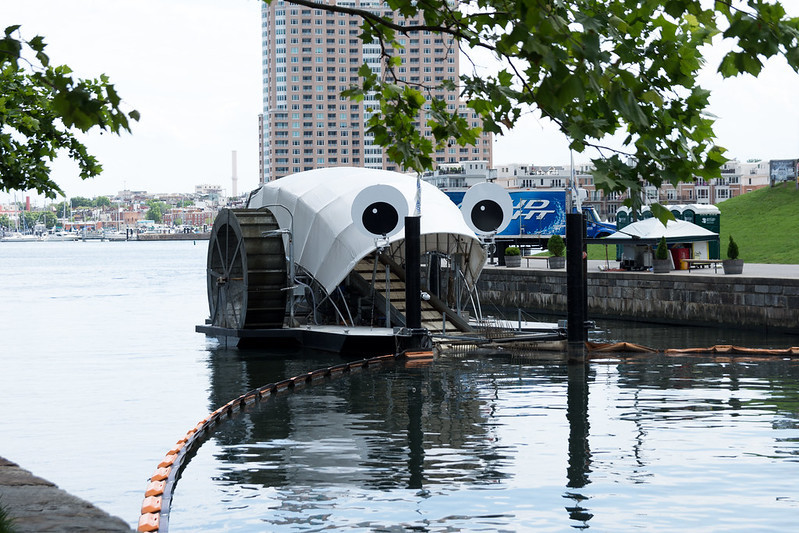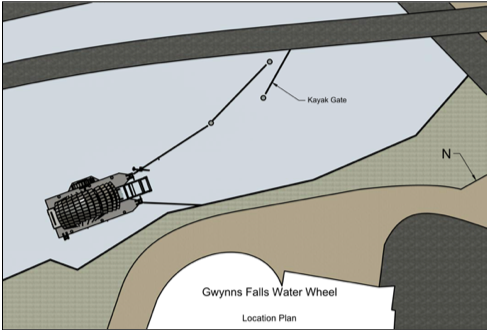
The city’s Trash Wheel family that already includes a Mister, Professor, and Captain will soon welcome a new member to its crew.
Waterfront Partnership’s Healthy Harbor Initiative announced this week that a fourth trash wheel—the largest of its kind—will be added to the stable—focusing on the Gwynns Falls area that spreads 60 square miles from Baltimore County to West Baltimore, and flowing into Ridgely’s Cove into the Middle Branch of the harbor. It will eventually make its way to the Patapsco River and Chesapeake Bay. This project is a communal one, too, as it’s the first time the city and the county are coming together to help fund a trash wheel.
“The watershed stretches across the city and county,” says Adam Lindquist, director of the Healthy Harbor Initiative. “The solution to clean up the harbor has always included both. This is going to help with the restoration of Middle Branch, which is such a unique asset.”
In a press release, Baltimore County Executive Johnny Olszewski emphasized that the Gwynns Falls flows from Reisterstown all the way to the Baltimore Harbor, adding that litter and water quality are regional issues that require this kind of partnership.
“[The new Trash Wheel] will remove trash while also calling attention to the fact that litter doesn’t stop where it drops,” he said. “So we need to prevent littering in the first place.”
With each trash wheel comes specific modifications designed to best handle the area it will be cleaning. This particular model will have a grappling arm, in essence a claw machine, to clear the large logs that often pervade the waterways in that area.
It will remove trash from the water and deposit it into a dumpster barge. And thanks to Wheelabrator Technologies, located on the property adjacent to the project, the interceptor will offload trash from the river and convert it into electricity for Maryland homes. The new wheel will also have 72 solar panels to capture sunlight that is often scarce in the area due to an overhead highway overpass.
“One nice thing about Baltimore is the three trash wheels we do have all have their own sort of unique environmental conditions,” says John Kellett, founder of Clearwater Mills, the company tasked with designing and building the wheels. TK.
There is, of course, the wonderful and unexpected cult following that the wheels have garnered throughout the city—they each have their own clever Twitter accounts—which have inspired a general sense of civic pride. Other cities are seeing what is happening in Baltimore and wanting in. Kellett says he gets calls all the time and is working on implementations in other parts of the country.
In an effort to to make ownership of this trash wheel feel truly communal, those involved are calling for name submissions for the fourth member of the “species.”
“I never dreamed the trash wheel would have sort of following it does,” Kellett says. “When I first came up with the idea, the most rewarding thing would be to see a much cleaner harbor. It turns out, just as rewarding is seeing all the people that it inspires to become part of the solution and the opportunity it presents for educating people about what they can do.”
There isn’t much variation when it comes to the type of waste that the trash wheel collects—namely, cigarette butts and all different kinds of plastic. The goal, of course, is to eradicate it all to the point where the trash wheel will no longer be needed. Lindquist sees a future in which Middle Branch is used for recreational activities like kayaking and swimming.
“Our goal to put these trash wheels on a diet,” Lindquist says. “We’re trying to reduce the amount of plastic so that we don’t need trash wheels forever.”
